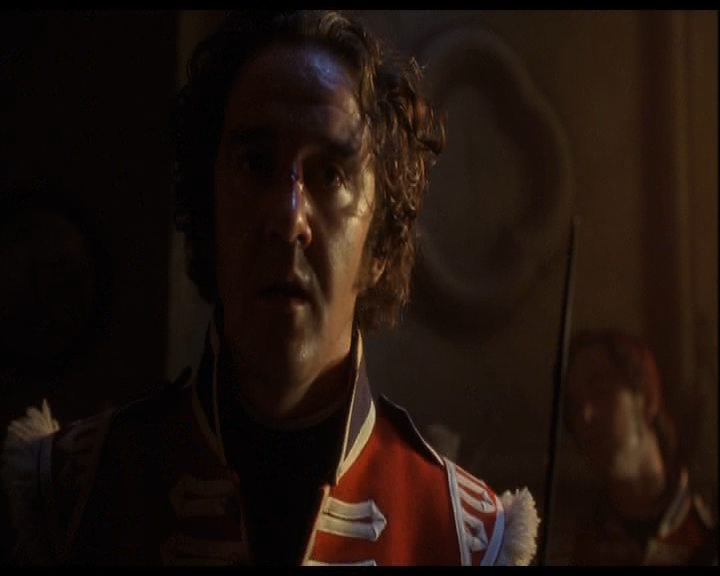A New Perspective On The Count Of Monte Cristo

Table of Contents
Beyond Revenge: Exploring Themes of Justice and Mercy in The Count of Monte Cristo
While revenge forms the central plotline of The Count of Monte Cristo, a deeper reading reveals a nuanced exploration of justice and mercy. Edmond Dantès's quest for retribution is far from simple, raising critical questions about the morality of revenge and the possibility of redemption.
The Morality of Revenge:
Is Edmond Dantès justified in his actions? The novel presents a compelling case study of "an eye for an eye," forcing readers to confront the complexities of seeking vengeance.
- The concept of "an eye for an eye": Dumas presents a compelling argument for and against this age-old principle, highlighting its limitations and potential for escalation. Edmond's initial quest is driven by a desire for simple justice, but his methods become increasingly ruthless as the narrative progresses.
- Edmond's evolving morality: The reader witnesses a stark transformation in Edmond. His initial innocence and naivete are gradually replaced by a calculated ruthlessness as he seeks to exact his revenge. This evolution complicates our understanding of his actions, blurring the lines between justice and vengeance.
- Alternative paths: Could Edmond have achieved justice through different means? The novel leaves room for reflection on alternative courses of action, prompting readers to question the effectiveness and ethical implications of revenge. Could forgiveness have been a more powerful tool?
The Redemption Arc:
Despite the darkness of his vengeful actions, The Count of Monte Cristo ultimately showcases Edmond's capacity for mercy and forgiveness. This redemption arc adds depth and complexity to his character, making him a far more compelling figure.
- Moments of mercy: Even amidst his quest for revenge, Edmond demonstrates moments of compassion and empathy, sparing the lives of some of his enemies. These acts suggest a lingering capacity for good, even in the face of immense suffering.
- Demonstrations of empathy: Edmond's acts of generosity, particularly towards those who have shown him kindness, reveal a deeper understanding of human nature and a capacity for genuine forgiveness.
- Symbolic meaning: His eventual acts of generosity can be interpreted as symbolic of his own journey towards redemption, suggesting that true justice lies not solely in revenge, but in finding peace and moving beyond the cycle of hatred.
A Masterclass in Narrative Structure: Analyzing Dumas's Storytelling Techniques in The Count of Monte Cristo
Dumas's storytelling prowess is evident throughout The Count of Monte Cristo. His masterful use of foreshadowing and multiple narratives significantly enhances the reading experience, keeping the reader captivated from beginning to end.
The Power of Foreshadowing:
Dumas expertly employs foreshadowing to build suspense and enrich the narrative. This technique allows the reader to anticipate future events, adding layers of depth and complexity to the plot.
- Examples of foreshadowing: Numerous instances of foreshadowing subtly hint at future events, heightening the sense of anticipation and intrigue. The early hints of Fernand Mondego’s jealousy, for instance, foreshadow his future betrayal.
- Impact on plot and reader engagement: By weaving these hints throughout the narrative, Dumas cleverly increases reader engagement, encouraging active participation in unraveling the mystery.
- Sustained suspense: The use of foreshadowing masterfully sustains suspense, ensuring that the reader remains invested in the unfolding events.
The Use of Multiple Narratives:
The novel’s intricate plot is further enhanced by Dumas's effective use of multiple narratives. The shifting perspectives provide a richer and more complex understanding of the characters and events.
- Shifting perspectives: The narrative seamlessly shifts between Edmond's perspective, his enemies', and various supporting characters. This multifaceted approach provides a more well-rounded and nuanced understanding of the story.
- Contributions to narrative depth: By presenting multiple viewpoints, Dumas challenges the reader to form their own interpretations of events, thereby increasing the novel's complexity and emotional impact.
- Effect on reader sympathy: The inclusion of multiple perspectives fosters empathy and understanding, allowing the reader to connect with characters beyond Edmond Dantès and appreciate the multifaceted nature of human relationships and motivations.
The Enduring Relevance of The Count of Monte Cristo in the Modern World
Despite being set in the early 19th century, The Count of Monte Cristo continues to resonate with modern readers due to its timeless exploration of human nature and societal issues.
Themes of Betrayal and Conspiracy:
The novel’s themes of political intrigue and betrayal remain strikingly relevant in contemporary society. The cutthroat world of ambition and power depicted in the novel mirrors many aspects of modern politics and business.
- Parallels to modern political events: The novel's depiction of backstabbing, conspiracies, and the abuse of power finds disturbing parallels in modern political landscapes.
- Enduring human nature: The novel's exploration of human nature—ambition, jealousy, and the capacity for both great good and terrible evil—transcends time, reminding us of the enduring human tendency towards these extremes.
The Search for Justice and the Abuse of Power:
The Count of Monte Cristo poignantly examines the ongoing struggle for justice and the potential for the abuse of power. These themes resonate deeply with contemporary concerns about fairness, equality, and the rule of law.
- Commentary on class systems: The novel subtly critiques class systems and societal inequalities, highlighting how these systems can lead to injustice and oppression, themes still prevalent today.
- Wrongful imprisonment and corruption: The novel’s powerful portrayal of wrongful imprisonment and corruption within the justice system continues to resonate with ongoing debates about judicial reform and accountability.
- Contemporary legal and political debates: The novel's exploration of these themes serves as a powerful reminder of the ongoing challenges in achieving true justice and preventing the abuse of power.
Conclusion
This article has offered a new perspective on The Count of Monte Cristo, moving beyond the surface-level narrative to examine its profound thematic depth and masterful storytelling techniques. The novel’s exploration of revenge, justice, mercy, and the abuse of power remains strikingly relevant in today's world. Its enduring appeal lies not only in its thrilling plot but also in its profound examination of the human condition.
Re-read The Count of Monte Cristo with a fresh perspective, paying close attention to the nuances of its characters and plots. Discover the enduring power of this classic tale, and delve deeper into the complexities of The Count of Monte Cristo’s timeless themes. You might be surprised by the new insights you uncover in this literary masterpiece.

Featured Posts
-
 Tabela Oficial Do Brasileirao Serie A Datas E Horarios Dos Jogos
May 05, 2025
Tabela Oficial Do Brasileirao Serie A Datas E Horarios Dos Jogos
May 05, 2025 -
 The Canelo Crawford Fight A Legacy Defined By Mayweathers Shadow
May 05, 2025
The Canelo Crawford Fight A Legacy Defined By Mayweathers Shadow
May 05, 2025 -
 Stanley Cup Playoffs Us Ratings Decline Offset By Increased International Viewership
May 05, 2025
Stanley Cup Playoffs Us Ratings Decline Offset By Increased International Viewership
May 05, 2025 -
 The Count Of Monte Cristo A Review For Modern Readers
May 05, 2025
The Count Of Monte Cristo A Review For Modern Readers
May 05, 2025 -
 Einschaltquoten Analyse Des Ersten Vorentscheids Zum Eurovision Song Contest 2025 In Deutschland
May 05, 2025
Einschaltquoten Analyse Des Ersten Vorentscheids Zum Eurovision Song Contest 2025 In Deutschland
May 05, 2025
